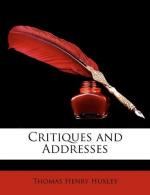Or, if we go back to the older half of the Mesozoic epoch, how truly surprising it is to find every order of the Reptilia, except the Ophidia, represented; while some groups, such as the Ornithoscelida and the Pterosauria, more specialized than any which now exist, abounded.
There is one division of the Amphibia which offers especially important evidence upon this point, inasmuch as it bridges over the gap between the Mesozoic and the Palaeozoic formations (often supposed to be of such prodigious magnitude), extending, as it does, from the bottom of the Carboniferous series to the top of the Trias, if not into the Lias. I refer to the Labyrinthodonts. As the address of 1862 was passing through the press, I was able to mention, in a note, the discovery of a large Labyrinthodont, with well-ossified vertebrae, in the Edinburgh coal-field. Since that time eight or ten distinct genera of Labyrinthodonts have been discovered in the Carboniferous rocks of England, Scotland, and Ireland, not to mention the American forms described by Principal Dawson and Professor Cope. So that, at the present time, the Labyrinthodont Fauna of the Carboniferous rocks is more extensive and diversified than that of the Trias, while its chief types, so far as osteology enables us to judge, are quite as highly organized. Thus it is certain that a comparatively highly organized vertebrate type, such as that of the Labyrinthodonts, is capable of persisting, with no considerable change, through the period represented by the vast deposits which constitute the Carboniferous, the Permian, and the Triassic formations.
The very remarkable results which have been brought to light by the sounding and dredging operations, which have been carried on with such remarkable success by the expeditions sent out by our own, the American, and the Swedish Governments, under the supervision of able naturalists, have a bearing in the same direction. These investigations have demonstrated the existence, at great depths in the ocean, of living animals in some cases identical with, in others very similar to, those which are found fossilized in the white chalk. The Globigerinae, Cyatholiths, Coccospheres, Discoliths in the one are absolutely identical with those in the other; there are identical, or closely analogous, species of Sponges, Echinoderms, and Brachiopods. Off the coast of Portugal, there now lives a species of Beryx, which, doubtless, leaves its bones and scales here and there in the Atlantic ooze, as its predecessor left its spoils in the mud of the sea of the Cretaceous epoch.




